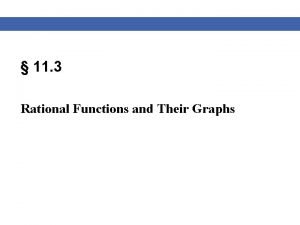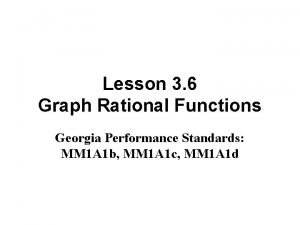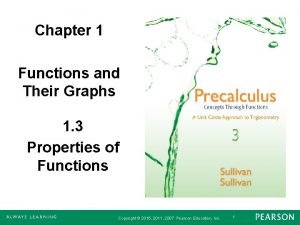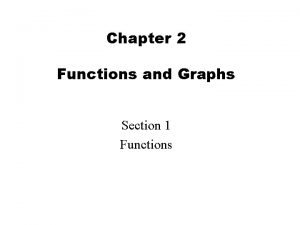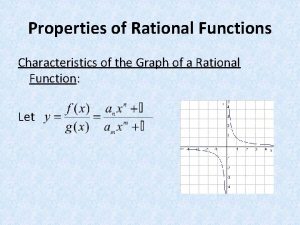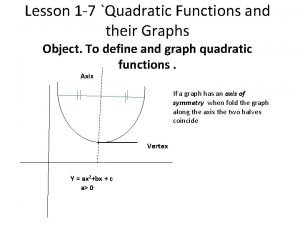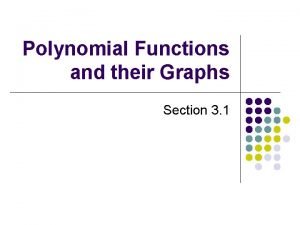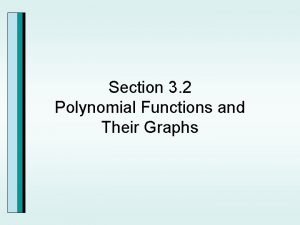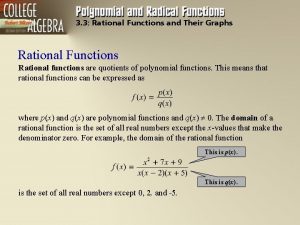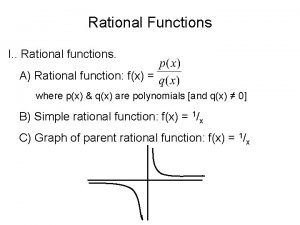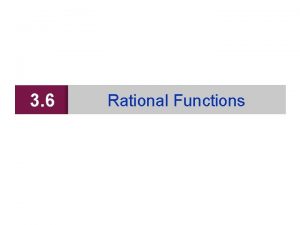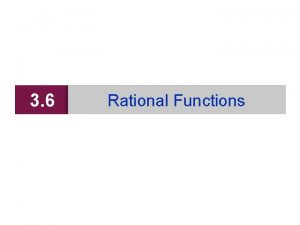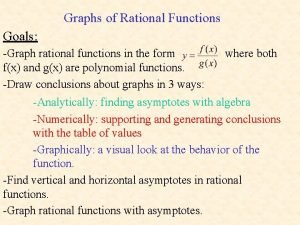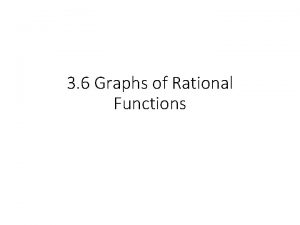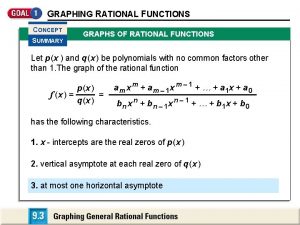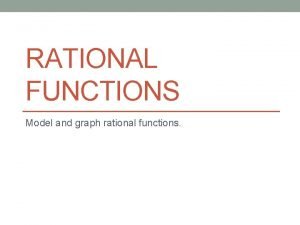Chapter 8 3 Rational Functions and Their Graphs













- Slides: 13

Chapter 8 -3 Rational Functions and Their Graphs St. Augustine Preparatory School October 27, 2015

Transformations Guide

One last thing from 8. 2 The graph of a function is a translation of the graph of y=2/x. What is the equation of the function?

Answer We can use the asymptotes to find an equation. We have a vertical asymptote (h) equal to -3 and a horizontal asymptote (k) equal to 4.

Another example The graph is of a function is a translation of the graph y = 4/x. What is the equation for the function?

Answer Vertical Asymptote at x = 2 Horizontal asymptote at y = 3

Types of Graphs 1) Continuous graphs – no breaking points Graph 1 2) Discontinuous graphs – have a hole or asymptotes Graph 2 and 3

Important Terms Point of Discontinuity – a point where the graph is not continuous, ie. has a hole in it. Example: At x = -2, the denominator is going to be equal to 0, meaning the function is undefined at x = -2

Important Terms Removable Discontinuity – a break in the graph that can be filled by simply redefining the function at the problematic value of x. Non-removable Discontinuity – A break in the graph that cannot be filled as we cannot redefine the equation at the problematic value of x.

Examples a) Removable discontinuity b) Non-removable discontinuity c) Once factored, you will have: x+3 (x-3)(x-1) So non-removable discontinuity

Finding Points of Discontinuity What are the points of discontinuity and are they removable or non-removable? Step 1: Factor the denominator: Step 2: Find points of discontinuity: x – 3 = 0 so x = 3 and x – 1 = 0, so x = 1 Step 3: Removable or non-removable? Since the denominator is not found in the numerator, the points are both non-removable

For the following: 1. Find the points of discontinuity 2. Determine if the points are removable or nonremovable 3. Redefine the function if a point is removable. 1. 2. 3. 4.

Answers 1) x = -5 and x = -4. The point at x = -5 is removable, where the point at x = -4 is not 2) x = 9 and x = -2. The point at x = -2 is removable. The point at x = 9 is not 3) x = -1. Non-removable point. 4) x = 1/3 and x = 2. Point at x = 2 is removable and the point at x = 1/3 is non-removable
 Horizontal asymptote
Horizontal asymptote Removable and nonremovable discontinuity
Removable and nonremovable discontinuity Sketch the graph of the following rational function
Sketch the graph of the following rational function How to find vertical asymptotes of a function
How to find vertical asymptotes of a function Lesson 3: rational functions and their graphs
Lesson 3: rational functions and their graphs Chapter 1 functions and their graphs
Chapter 1 functions and their graphs Chapter 2 functions and their graphs answers
Chapter 2 functions and their graphs answers Properties of rational functions
Properties of rational functions Polynomial end behavior chart
Polynomial end behavior chart Quadratic functions and their graphs
Quadratic functions and their graphs Common functions and their graphs
Common functions and their graphs Types of polynomial
Types of polynomial Polynomial functions and their graphs
Polynomial functions and their graphs Polynomial functions and their graphs
Polynomial functions and their graphs


